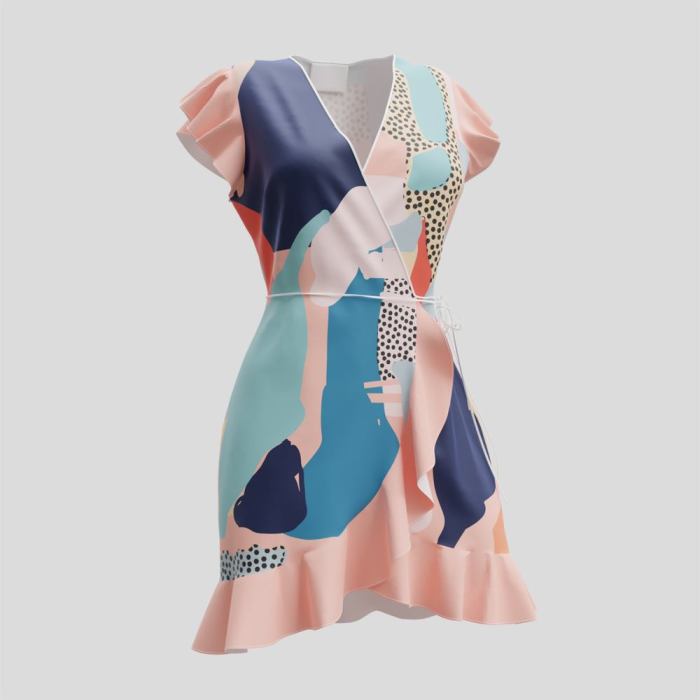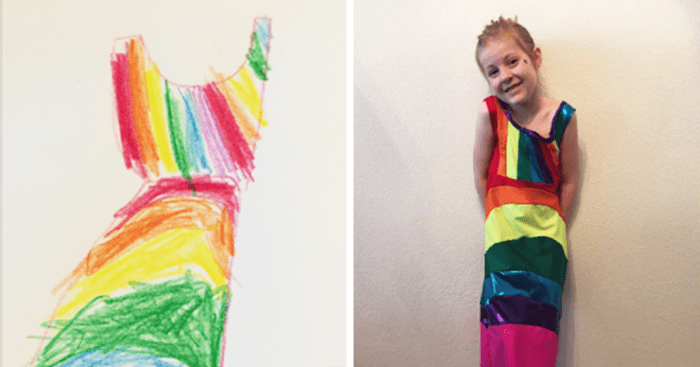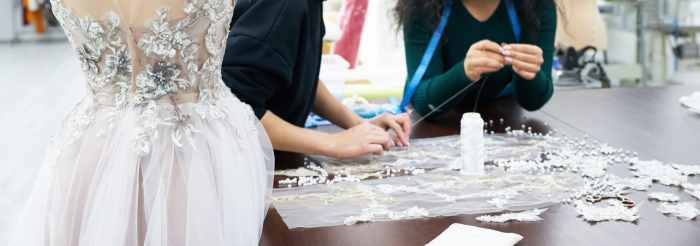Popularity and Trends in Online Wedding Dress Design
Design your own wedding dress online – The online wedding dress design market is experiencing significant growth, driven by the increasing demand for personalized experiences and the convenience of online shopping. This section will explore current market trends, popular features, platform comparisons, and the evolution of online design tools.
Current Market Trends in Online Wedding Dress Customization

Source: contrado.com
Current trends indicate a strong preference for sustainable fabrics, unique embellishments reflecting personal style, and a move away from traditional silhouettes towards more modern and diverse designs. The rise of social media also significantly influences design choices, with brides often drawing inspiration from online platforms and influencers.
Top Three Features Sought After by Online Dress Design Users
Three key features consistently rank highly among users: a wide selection of customizable options (fabrics, embellishments, silhouettes), intuitive and user-friendly design tools, and realistic 3D visualizations of the final product. These features allow for greater creative control and reduce uncertainty before committing to a purchase.
Comparative Analysis of Three Online Wedding Dress Design Platforms
While specific platform names are omitted to maintain generality, three distinct online platforms were analyzed, showcasing varied user experiences. Platform A excels in its intuitive interface and realistic 3D rendering, while Platform B offers a broader selection of fabrics and embellishments. Platform C, however, struggles with navigation and lacks detailed product visualizations.
Evolution of Online Wedding Dress Design Tools (Past Five Years)
Over the past five years, online wedding dress design tools have undergone significant advancements. Initially, tools were largely 2D, offering limited customization. Stage 1 (Years 1-2): Basic 2D design tools with limited fabric and embellishment choices. Stage 2 (Years 2-4): Introduction of basic 3D modeling with improved fabric visualization. Stage 3 (Years 4-5): Advanced 3D modeling with realistic fabric simulation and more detailed customization options.
Designing your own wedding dress online offers unparalleled customization; however, browsing pre-designed options can spark inspiration. For example, seeing the beautiful selection of david’s bridal beach wedding dress might give you ideas for fabrics or silhouettes. Ultimately, though, the ability to personalize every detail remains a key advantage of online dress design.
This evolution reflects improvements in technology and a greater understanding of user needs.
Design Process and Customization Options
Designing a wedding dress online typically involves a series of steps, from initial inspiration to final order placement. This section details these steps and explores the customization options offered by different platforms.
Steps Involved in Designing a Wedding Dress Online
- Browse and select a base dress style.
- Customize fabric, color, and embellishments.
- Adjust silhouette and other design elements.
- View 3D rendering of the design.
- Review and finalize the design.
- Place order and provide measurements.
Comparison of Customization Options Across Three Platforms

Source: boredpanda.com
| Platform | Fabric Options | Embellishment Options | Silhouette Options |
|---|---|---|---|
| Platform A | Silk, satin, lace, tulle (limited colors) | Beading, embroidery, sequins (limited designs) | A-line, ballgown, mermaid |
| Platform B | Wide variety of fabrics and colors | Extensive range of embellishments and custom designs | A-line, ballgown, mermaid, sheath, empire waist |
| Platform C | Limited fabric choices, few color options | Basic embellishment options | A-line, ballgown |
Decision-Making Process Flowchart
A flowchart would visually represent the user’s journey, starting with initial style selection, branching into fabric, embellishment, and silhouette choices, culminating in a finalized design. Each decision point would offer options and lead to the next stage in the process.
Technical Aspects of Online Dress Design Tools

Source: josabimariees.com
Online dress design tools utilize 3D modeling software to create realistic representations of the dresses. Fabric simulation technology realistically portrays how different fabrics drape and fall, allowing users to visualize the final product accurately. Advanced algorithms are used to handle complex design elements and ensure accurate measurements.
User Experience and Interface Design
A positive user experience is crucial for the success of online wedding dress design platforms. This section evaluates the user interfaces of three platforms and suggests improvements.
Evaluation of User Interfaces Across Three Platforms
Platform A’s intuitive drag-and-drop interface and clear visual feedback are positive aspects. However, Platform B’s cluttered interface and confusing navigation hinder the user experience. Platform C’s lack of visual aids and poor responsiveness are significant drawbacks.
Usability Improvements for Online Dress Design
- Improved search and filtering options.
- More intuitive navigation and clear labeling.
- Enhanced 3D visualization capabilities.
- Improved responsiveness across devices.
- Personalized recommendations based on user preferences.
Ideal User Journey from Browsing to Order Placement
The ideal user journey begins with browsing inspiring designs, followed by easy customization options, realistic 3D previews, and a straightforward checkout process. Seamless integration with measurement tools and clear communication throughout the process ensures a positive experience.
Impact of Intuitive Navigation and Clear Instructions, Design your own wedding dress online
Intuitive navigation and clear instructions significantly reduce user frustration and improve satisfaction. Easy-to-understand design tools and helpful tutorials empower users to create their dream dresses without technical difficulties.
Pricing and Ordering Process: Design Your Own Wedding Dress Online
Understanding the pricing structure and ordering process is vital for prospective customers. This section compares pricing across platforms and details the typical steps involved in placing an order.
Comparison of Pricing Structures Across Three Platforms
- Platform A: Tiered pricing based on fabric and embellishment choices.
- Platform B: Base price plus additional costs for customization options.
- Platform C: Fixed pricing with limited customization options.
Steps Involved in Placing an Online Order
- Finalize the design and confirm measurements.
- Review the order summary and pricing.
- Select payment method and provide billing information.
- Confirm the order and receive order confirmation.
- Track the order status and estimated delivery date.
Payment Options Typically Available
Common payment options include credit cards, debit cards, PayPal, and sometimes financing options. Secure payment gateways are essential to protect customer information.
Potential Ordering Process Challenges and Solutions
Potential challenges include inaccurate measurements leading to ill-fitting dresses, delays in delivery, and issues with payment processing. Solutions include detailed measurement guides, proactive communication with customers, and reliable payment gateways.
Ethical and Sustainability Considerations
Ethical and sustainable practices are increasingly important in the fashion industry. This section explores the environmental and ethical considerations related to online wedding dress design and manufacturing.
Environmental Impact of Online Wedding Dress Design and Manufacturing
The environmental impact encompasses fabric production, manufacturing processes, packaging, and transportation. Sustainable practices like using eco-friendly fabrics, reducing waste, and optimizing transportation can mitigate this impact.
Ethical Considerations Related to Labor Practices
Ethical concerns include fair wages, safe working conditions, and transparency in the supply chain. Supporting brands committed to ethical labor practices is crucial.
Strategies for Promoting Sustainable Practices
Strategies include sourcing sustainable fabrics, adopting eco-friendly manufacturing processes, reducing packaging waste, and promoting transparency in the supply chain. Educating consumers about sustainable choices is also important.
Comparison of Sustainability Initiatives Across Three Platforms
| Platform | Material Sourcing | Manufacturing Processes | Waste Reduction Strategies |
|---|---|---|---|
| Platform A | Uses some recycled materials | Limited information available | No specific initiatives mentioned |
| Platform B | Focus on sustainable and ethically sourced fabrics | Emphasizes low-waste manufacturing | Recycling programs for packaging materials |
| Platform C | Limited information available | No specific initiatives mentioned | No specific initiatives mentioned |
Questions Often Asked
Can I see a 3D rendering of my design before ordering?
Most reputable online platforms offer 3D rendering capabilities, allowing you to visualize your design before finalizing your order.
What if I need alterations after receiving my dress?
Most companies offer alteration services, either through their own tailors or through recommendations. Details regarding alteration policies should be clarified before placing an order.
What is the typical turnaround time for a custom-designed dress?
Turnaround times vary depending on the platform and complexity of the design, but typically range from several weeks to several months. Confirm the estimated timeframe before ordering.
What happens if I’m not satisfied with the final product?
Each platform has a different return and refund policy. Carefully review these policies before placing your order to understand your rights and options.
